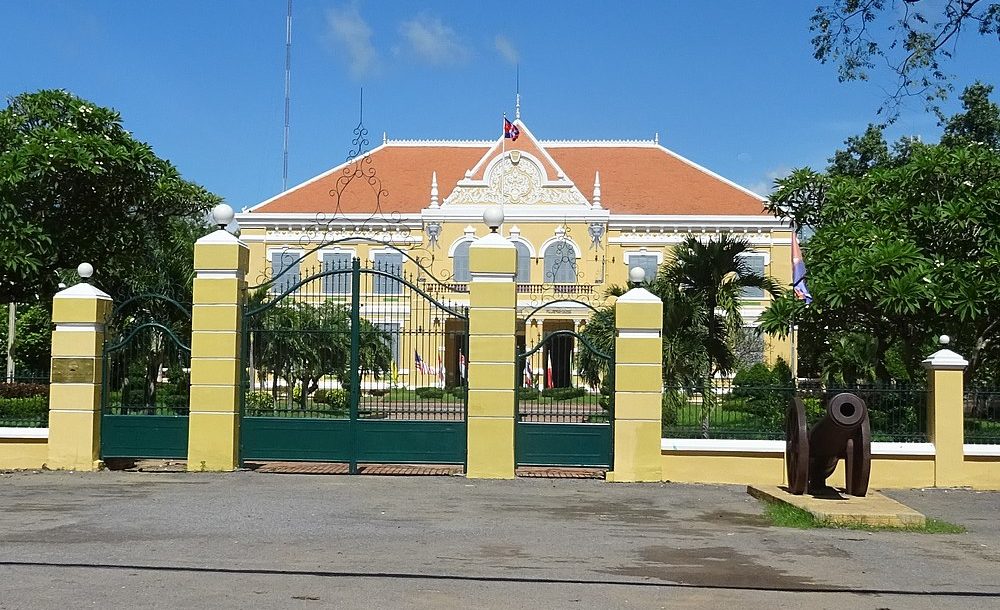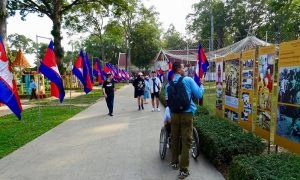Civil society organisations (CSOs) enjoyed the large inflow of foreign aid that flooded into Cambodia after the 1991 Paris Peace Agreement (PPA). But when a controversial Law on Associations and Non-Governmental Organisations (LANGOs) was promulgated in 2014, registered and non-registered CSOs faced criminalisation if they could not comply with the imposition of registration requirements. Offices had to close, preventing operations.
This burden was a retaliation against civil society organisations for criticising the government’s policies on extraction of natural resources, deforestation and land grabbing. Such critiques were antagonistic to the incumbent Cambodian People’s Party (CPP) and were framed by the government as anti-national and destabilising of peace. CSOs were also restricted by the COVID-19 pandemic. The restrictions exacerbated challenges for CSOs in enhancing community education on anti-corruption and improving good governance after the 2018 national election. Two case studies conducted after the 2018 national election show that CSOs’ activities to empower communities and promote good governance have been repressed by networks of patrimony and clientalism, systemic in the Cambodian People’s Party’s (CPP) power structure.
One CSO in Battambang province suffered little or no repression when young people engaged with capacity building on anti-corruption and good governance. They recruited young people from universities and high schools in various places for a capacity building program. They used social media, like Facebook and the peer-to-peer networks of young people who had attended past capacity building programs. The CSO trained these young people in anti-corruption strategies and good governance, to monitor and improve public services (i.e. road construction, health services, schoolteacher performance, local security and safety, civic registration…). Once they completed this capacity building, the CSO provided funds, ranging from USD 500 to USD1,000 depending on proposed activities that those young people had planned to empower communities.
The CSO faced repression once they mobilised young people to empower communities. Proposed empowerment program had, sometimes, received approval from the provincial authority; however, local authorities at commune or district levels always asked for the detailed program of activities. When program activities and course outlines discussed anti-corruption strategies, young people were restricted and banned from promoting that knowledge to communities. In most cases, local authorities at the commune or district levels accompanied the young people and attended the event to monitor the sessions. With that intervention, space for young people to discuss topics proposed for the education activities in communities shrank.
To progress what they had planned, the topics of discussion had to be revised. Instead of discussing anti-corruption and good governance, they talked, for example, about a clean environment: water and sanitation, hygiene and rubbish collection. They self-censored to avoid pressure from the local authorities and police. Nevertheless, some were able to discuss the topics of anti-corruption and good governance within local public service delivery. They could, however, do this only through informal discussion. For that reason, the extent to which it reached larger audiences was limited.
When topics were adjusted, they did not threaten the centralised system of resource control. In fact, CSOs delivered development programs (i.e. health, education, and livelihood programs to under-serviced communities), filling the gaps in the Government’s development agenda. Development activities in communities were always permitted.
CSO’s activities to empower communities to monitor governance and corruption were repressed, as they threatened systemic patterns of collusion in the still-centralised system of infrastructure spending and approvals. Despite decentralisation and deconcentration (D&D) reforms since 2002, decision-making over resources remained centralised. Further, in road construction and renovation, distinction between public and private is blurred. Some senior officials had two roles: government officials and investors at the same time, allowing insider information to influence the tender process. With contracts awarded to the lowest tender, many projects were of poor construction quality and require frequent repair.
In contrast to the first case study, in Kampong Thom province, another CSO mobilising young people to educate and convey community voices and demands for local development encountered little or no repression from the local authorities and police. They used the Implementation of the Social Accountability Framework (ISAF), a tool co-designed by Ministry of Interior (MoI) and CSOs to mobilise young people to empower communities. The ISAF requires implementation by both the Government and development partners together. Implementing the ISAF demands citizen engagement with local government, in order to hold them accountable for the quality of those public service delivery.
Significant differences arise around how “human dignity” is defined and protected, and what it requires of states, non-state institutions and citizens.
“Human dignity” in Cambodian law, policy and civil society advocacy
The CSO in the second case study relied on local authorities to recruit young people to implement the ISAF framework. Those recruited had a strong attachment to the commune office. Many had been liaising between development organisations and the commune office. They were also members of the CPP and had prominent roles and members of the Union Youth Federation of Cambodia (UYFC), a CPP party affiliated organisation.
By implementing the ISAF framework, the CSO influenced the commune office to integrate the local community voices and demands into the CIP with support of the commission and encouragement from the commune office. In every quarter, CSO mobilised young people to report local community voices and demands to the commune office. The most common issues that they reported were safe communities without drug use; affordable cost of and accessible connection to electricity; ethical performance of health service providers and schoolteachers; and safe water, sanitation and hygiene. However, the commune office did not have budget to address those priorities. They relied on development partners/organisations to address those priorities as the large proportion of the commune budget was reserved for local infrastructure. So, the influence of the voices and preferences of the communities on the commune office remained limited. This limited influence could be associated with the strategy of recruiting young people who could be easily co-opted once they brought local demands to the table. There are two possible reasons for this. Traditionally, leaders (Naktum or Nakdeun’am) have a greater say, so they must be respected by young people. Further, the commune office, though empowered by the commune law for decision-making and planning, have little power to manage the commune budget to address local demands. They relied on the resource management power at the provincial treasury or provincial office.
It appears that in the second case, the intervention of improving local governance produced a stronger system of networks of clientalism and patronage. Young people actively associated themselves with organisations, commune offices, and the UYFC. They were known to and very close to commune office after they had received capacity development provided by organisations or state institutions. In that case, they established the stronger networks of patrimonial and clientalism at the local government. Therefore, these interventions appear to improve accountability, but not to local communities. The young people are accountable to local authorities and local authorities are accountable to the upper ranks of the CPP’s hierarchical structure through the mechanism of quarterly reporting and meetings. In contrast to this, management of budget is still centralised and rigid centralised planning. This centralised budget planning is a CPP’s political strategy for material inducement (i.e construction of schools, temples, roads, gifts…) that has enabled them to connect and satisfy its strong base of CPP’s rural electorates.
In sum, CSO’s activities to promote anti-corruption and improve governance through community education were suppressed by local members of the CPP authority and police in their network. The projects’ attempts to address the collective concerns of communities were co-opted and controlled. In some instances, those collective concerns were inserted into the commune planning, but actions taken by the local government were barely influenced. The collective concerns of local communities were left for development partners to deal with, while the government kept its focus on infrastructure upgrades, an area that is susceptible to collusion and corruption practices. Both case studies still present formidable challenges for the full engagement of communities in tackling the corruption in public services and in addressing local demands for community development.
 Facebook
Facebook  Twitter
Twitter  Soundcloud
Soundcloud  Youtube
Youtube  Rss
Rss 



